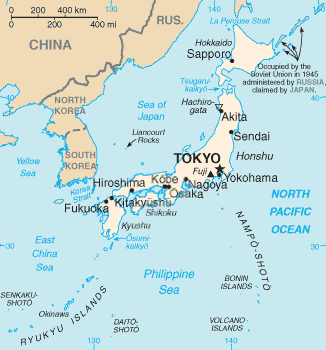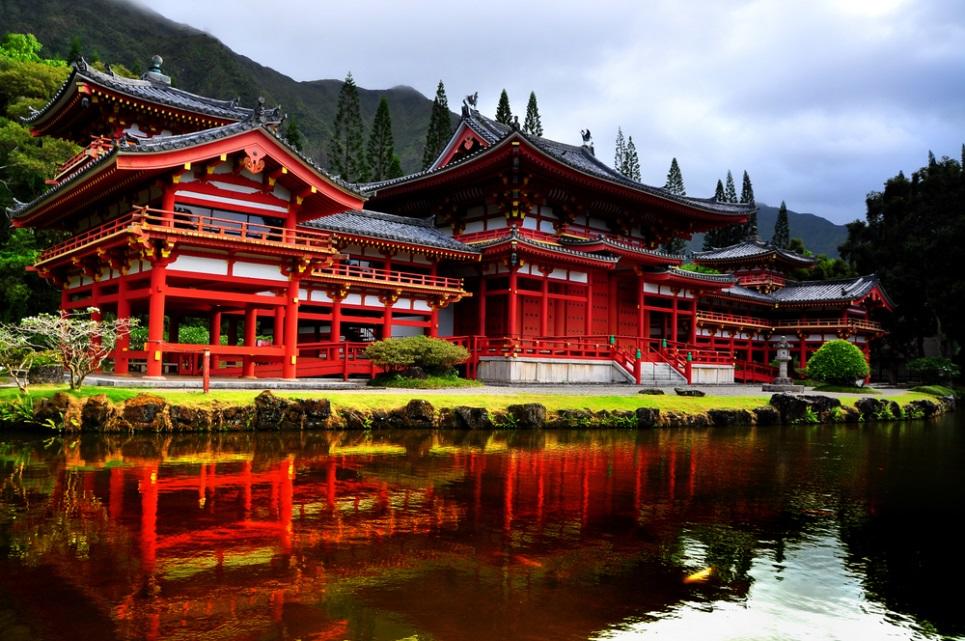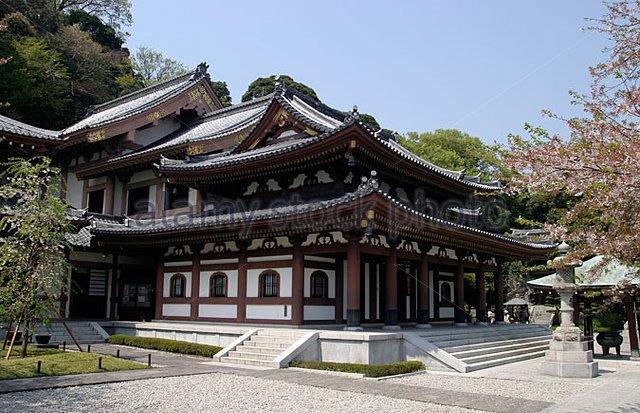History of Japan
Historians believe strongly that human beings have lived in Japan for thousands of years. The country is an island located in the Pacific Ocean. The nation is characterized by imperial places, shrines, dense cities, and mountains. The capital city of the country is Tokyo and is known for its pop culture and skyscrapers (Clements, 2015). Before the 16th century, Japan was an isolated island that did not interact with the outside world. During the period, the country was governed by shoguns and emperors (Clements, 2015). One of the famous shoguns was called Tokugawa Leyasu (Kuroda, 2015).
The Tokugawa clan controlled trade and decisions in Japan until the year 1868. During the time, power in the country was taken back to the Emperor after the Meiji Restoration. The following period was characterized by global trade and Western integration. After the Meiji Restoration, the nation embarked on a new journey aimed at modernizing various aspects of the economy (Clements, 2015). The military and education systems were improved. These new improvements and developments made it easier for the country to strengthen its economic sectors. This kind of development would eventually change the country’s history.
The strength of this new nation made it easier for the army to wage war against its neighboring nations such as Russia, China, and Korea. The intervention by different western nations forced Japan to engage in militarization. The country participated in the First World War as a member of the Allies. Japan decided to invade Indochina in the year 1940 (Reed, 2012). The end of the World War II became a turning point for this nation. Japan was occupied by America in order to ensure it was demilitarized. This move was aimed at transforming the nation’s international policy and making it hard for its leaders to wage war in the future. Luckily, new economic policies emerged and eventually transformed the future of the country. Japan is one of the economic giants in the world today.
Analysis of Japan
Geography
Japan is located in East Asia (Reed, 2012). The island nation lies” between 123o to 146o east longitude and 24o and 46o north latitude” (Reed, 2012, p. 4). Japan lies southeast of the Russian Federation. Russia is also the closest neighbor of this nation (Clements, 2015). One of the unique geographical aspects of Japan is that it is comprised of very many islands. Kuroda (2015) indicates that “Japan has a total of 6,852 islands” (p. 8). Some of the major islands include Honshu, Hokkaido, Kyushu, and Shikoku. The country’s size is around 377,923 square kilometers (Clements, 2015). The total area covered by water is around 13,430 square kilometers. Japan is divided into different regions. Each of these regions is constituted of several prefectures. However, these regions are usually informal.

The country’s climate varies from cool temperate to tropical. This kind of climate makes it easier for many people in the nation to engage in a wide range of economic activities. Around 11 percent of the land surface is used for arable purposes (Reed, 2012). Irrigation is also a common practice in this nation. Reed (2012) indicates that the country is characterized by rugged terrains. The mountainous terrains of Japan make it a unique island that attracts the largest number of tourists. This is the case because over 70 percent of the country’s land is characterized by mountains and rugged terrains (Clements, 2015).
Japan has been grappling with a number of environmental issues that should be addressed in order to support the country’s posterity. Some of the challenges affecting the island include global warming and climate change. The nation’s mountainous terrain explains why the problem of soil erosion remains a major challenge in this country (Reed, 2012). That being the case, the government has been identifying new strategies that can be embraced in order to deal with the current problem of environmental degradation.
Economy of Japan
It is agreeable that Japan is one of the developed economies in the world today (Kuroda, 2015). The country’s economy “is the third-largest in terms of nominal gross domestic product (GDP)” (Matanle, Ishiguro, & McCann, 2014, p. 481). Kuroda (2015) argues that the country is the second largest economy in the world. In 2014, the nation’s GDP per capita stood at $37,500 (Matanle et al., 2014). The country is one of the G7 members (Kuroda, 2015). Experts believe strongly that the country’s economy will grow in the next decade. Consequently, more people will be able to invest in the country and eventually realize their objectives in life.
The economic growth recorded in Japan can be traced back to the 1950s (Reed, 2012). The end of the Second World War led to new policies that supported economic growth. A number of industries emerged such as the automobile sector (Kuroda, 2015). The economic growth in this nation was large from the 1960s to the 1990s. The promotion and support of different industries is a major strategy that has continued to support the country’s economic performance.
In order to support economic growth, Japan has embraced a number of strategies that have delivered positive results. For instance, the country has been embracing the use of sustainable energy. Moreover, Japan has been abandoning the use of nuclear energy. The government has also been on the frontline to construct roads that can support economic performance and sustainability. Railway transport, for instance, has become a major aspect of the country’s infrastructure (Matanle et al., 2014). Consequently, such developments have made it easier for the country to achieve its economic goals and objectives.
Several sectors continue to support the country’s economic growth. Agriculture, for instance, accounts for over 1.5 percent of the total GDP (Kuroda, 2015). This happens to be the case because the country’s land is mountainous. Around 10 percent of the land is available for agricultural practices. The fishing industry in Japan has continued to promote the economy of this nation. The country has been supplying the global market with large quantities of fish. Consequently, the industry has made it easier for the country’s economy to grow rapidly.
It is undeniable that Japan is the leading manufacturer, marketer, and producer of vehicles in the world (Kuroda, 2015). The country’s leading car brands include Nissan, Toyota, Mazda, and Suzuki. These companies have made it easier for the country to realize its economic goals. More people in the country have access to new job opportunities. These factors contribute to the positive economic performance experienced in this country.
Japan’s Political System
One unique feature of Japan is that it has a ceremonial Emperor. This Emperor is usually treated as the Head of State (Bukh, 2014). The cabinet and the government are governed by the Prime Minister. The office of “the Prime Minister acts as the executive brand of the country’s government” (Clements, 2015, p. 38). The bicameral system is characterized by “the House of Councilors and the House of Representatives” (Clements, 2015, p. 58). The political system also creates room for a judiciary. The judiciary is one of the three arms of the Japanese government. The Supreme Court is expected to control and monitor the operations of the judiciary. The people of the country are empowered by the country’s Constitution. The Constitution dictates the rights, liberties, and freedoms of the citizens in the country. Sovereignty in Japan is usually “vested in the people” (Clements, 2015, p. 48). Civil law is applied in the nation in order to promote and support every aspect of governance.
Japan has a number of political parties that dictate the policies formed in the country. The major political parties in the nation include the Democratic Party (DPJ), the People’s New Party (PNP), the Liberal Democratic Party (LDP), and the Social Democratic Party (SDP). The politics of Japan have been controlled and dominated by the LDP party for many years (Bukh, 2014). These parties have made Japan a democracy whereby the actions and decisions of the government can be opposed.
Another aspect of Japan’s political system is that it has positive foreign relations with the other members of the United Nations (UN). The country is a critical trade partner within the East Asian region. The Japanese Constitution prohibits the nation from embracing the use of the military to invade other nations (Reed, 2012). Unfortunately, Japan has a number of territorial disputes with countries such as Russia, China, and South Korea (Clements, 2015).
Culture
Japan is one of the nations with a unique culture. This is the case because its culture has been influenced by many leaders, emperors, and trade partners over the past ten centuries (Reed, 2012). The first attribute of the country’s culture is that of language. The people in this country use Japanese as the main language. The country also celebrates a number of literary works by different scholars. Japanese literature has been influenced significantly by Indian and Chinese ideologies (Ashkenazi & Jacob, 2014). From the 19th century, the country’s culture has been influenced by many Westerners.
Visual arts are embraced by many citizens in the country. For instance, many people in Japan have embraced the concept of papermaking since the 7th century (Clements, 2015). This kind of art was borrowed from Chinese towards the end of the same century. The concept of papermaking has evolved to become what is known as washi today (Ashkenazi & Jacob, 2014). Additionally, the country has several schools that focus on painting and art. Some of the famous painters from the country include Tani Buncho and Kano Sanraku (Reed, 2012). Flower arrangement is another form of art that has been embraced in the country for very many centuries. This kind of art is called Ikebana (Clements, 2015).
The architecture of Japan is admired by many people across the world. This kind of culture has borrowed a wide range of aspects from the famous Chinese architecture (Reed, 2012). This kind of architecture is associated with Japanese castles, Shinto shrines, and Shaolin temples (Matanle et al., 2014). In the recent past, many architects have been focusing on the best approaches to amalgamate Japan and Western architectural ideas.

Some of the common cuisines and dishes in this country include suchi, instant noodles, teriyaki, and tempura (Ashkenazi & Jacob, 2014). Sea foods, fish, rice, and boiled vegetables are embraced by many Japanese citizens. Sporting activities are also embraced in the country such as sumo wrestling, kyudo, judo, and baseball (Reed, 2012). The country embraces a number of popular culture entertainments such as films, music, and comic books (Reed, 2012). Several rituals such as burials, weddings, and celebrations are common in this country. Such traditional practices are usually informed by the people’s cultural backgrounds or religious affiliations.
Religions of Japan
Buddhism and Shinto are the leading religions that have been embraced by the people for very many centuries. Reed (2012) indicates that Shinto is the oldest religion that has been practiced in this country since the 2th century. On the other hand, Buddhism emerged in this county in the mid 6th century. For the past fourteen centuries, these religions have influenced the ideas and concepts held by many people in Japan. It is also agreeable that the religions appear to have similar ideas or thoughts. These complementary ideologies explain why they have coexisted in the country in a harmonious manner. Some people in the country argue that they belong to the two religious groups.

One of the unique facts about the nature of religion in this country is that it does not dictate the manner in which people lead their lives. This is the case because the religious thoughts are guidelines aimed at dictating or guiding the manner in which people live or relate with each other. Religious thoughts are usually embraced whenever engaging in a number of societal rituals such as funerals, New Year celebrations, and weddings. People might decide to visit shrines once in a while (Bukh, 2014). New religions have emerged in the country such as Confucianism, Islam, and Christianity (Reed, 2012).
Personal Opinions
The above analysis shows clearly that Japan is an attractive destination for both entrepreneurs and tourists. The economic climate experienced in the country has been supported by the cultural values and political strategies embraced by different leaders. The leaders in the country have been supporting the effectiveness and performance of different sectors of the economy. Consequently, more people have been able to get new job opportunities. The living conditions are appropriate for the greatest number of citizens in this country (Matanle et al., 2014). Experts have gone further to argue that the economy of this country will grow in the next decade. New opportunities will emerge and make it easier for different entrepreneurs and citizens to achieve their goals. The religious values, cultural practices, and economic policies have made it easier for this nation to become a global economic powerhouse. That being the case, nations that want to realize their economic goals should borrow some of the initiatives associated with this nation.
Some recommendations can also be presented in order to support the economic performance of this country. For instance, Japan can address the current territorial conflicts in order to increase the confidence of its trade partners. Forming new trade pacts with other emerging actions can support the country’s economic model. A new strategy aimed at addressing the unique needs of underserved populations in the country can ensure more people lead better lifestyles (Clements, 2015). These measures will support Japan’s economic goals and eventually make it the most developed and politically stable nation in the world.
References
Ashkenazi, M., & Jacob, J. (2014). The essence of Japanese cuisine: An essay on food and culture. New York, NY: Routledge.
Bukh, A. (2014). Revisiting Japan’s cultural diplomacy: A critique of the agent-level approach to Japan’s soft power. Asian Perspective, 38(1), 461-485. Web.
Clements, R. (2015). A cultural history of translation in early modern Japan. New York, NY: Cambridge University Press.
Kuroda, H. (2015). Japan’s economy and monetary policy.
Matanle, P., Ishiguro, K., & McCann, L. (2014). Popular culture and workplace gendering among varieties of capitalism: Working women and their representation in Japanese Manga. Gender, Work and Organization, 21(5), 472-489.
Reed, E. (2012). Japan: Its history, traditions, and religions. New York, NY: Cambridge University Press.